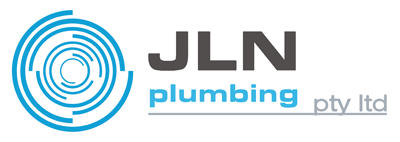-
Aviator Login – Secure Access to Your Account Guide
-
Understanding the Aviator Login Process
-
Step-by-Step Instructions for Account Access
-
Common Sign-In Issues and Troubleshooting Tips
-
Security Features Explained
-
Optimizing Your Aviator Account Security
Elevate your experience with an innovative system designed to enhance convenience and privacy. Navigate to the portal effortlessly and harness aviator bet a seamless transition into your personal space. Each component is meticulously crafted, ensuring that every interaction is streamlined and efficient.
Step-by-Step Navigation: Begin by entering the designated web address, where you will promptly encounter a welcoming interface. Input your credentials accurately; ensure your information is correct to avoid unnecessary delays. Leveraging modern encryption techniques guarantees that your data remains shielded from unauthorized access.
Recovery Tips: In case of forgotten details, utilize recovery options available on the site. Follow the outlined procedures carefully to restore your access with minimal hassle. Engaging with the support team can provide personalized assistance if needed, ensuring continuity in your experience.
Optimal Device Usage: This platform thrives on compatibility; whether utilizing mobile or desktop, the interface adjusts flawlessly to enhance usability. For an uninterrupted session, consider updating your browser to the latest version, ensuring that all features are accessible without complications.
Stay connected and informed with timely updates and notifications about your activities. This intuitive setup not only simplifies your user journey but also promotes an efficient way to manage your engagements with ease.
Understanding the Aviator Login Process
To navigate the entry procedure effectively, it’s essential to comprehend the steps involved. First, ensure you are on the official website. Check for correct domain spelling to avoid phishing attempts.
The initial step requires inputting your registered email address. This identifier is crucial, as it links to your profile. After this, proceed to enter the associated password. Create a strong password that combines letters, numbers, and symbols to enhance security.
If encountering difficulties during the authentication phase, verify your credentials. Ensure that the Caps Lock key is not activated, as this could lead to erroneous entries.
In cases of forgotten passwords, utilize the recovery option provided on the page. Typically, this involves receiving an email with a link to reset your password. Follow the instructions carefully to regain entry.
For additional safety, consider enabling two-factor authentication if offered. This feature adds a layer of protection by requiring a second form of verification, such as a code sent to your mobile device.
Be mindful of browser settings. Using up-to-date browsers can prevent compatibility issues. Clear cache and cookies periodically to ensure optimal performance of the site.
In summary, staying vigilant and following the outlined steps will facilitate a seamless and secure experience when interacting with your profile. Prioritize safety and be proactive in your digital habits.
Step-by-Step Instructions for Account Access
To easily connect to your personal profile, follow these concise steps:
1. Navigate to the official website: Start by entering the correct URL into your browser. Ensure that the webpage is legitimate to prevent any security issues.
2. Locate the Sign-in Section: Once on the homepage, look for the area designated for user credentials. This is often found at the upper right corner of the site.
3. Enter your Username: Type in the unique identifier associated with your profile. Double-check for any typographical errors before proceeding.
4. Provide Password: Input the secret code that protects your information. Be mindful of case sensitivity and ensure that Caps Lock isn’t activated.
5. Enable “Remember Me” Option: If you’re using a private device and want to stay logged in for future visits, consider selecting this feature. It streamlines the process for your next session.
6. Click on the Login Button: Once all credentials are entered, confirm your input by pressing the designated button to initiate the connection.
7. Troubleshoot Login Issues: If you encounter problems, look for a “Forgot Password?” link. This will guide you through recovering or resetting your secret code.
8. Enhance Security Practices: After successfully connecting, review your profile settings to activate two-factor authentication or other safety measures. This adds an extra layer of protection to your sensitive data.
By following these detailed instructions, you will ensure a smooth entry into your digital platform, enhancing your overall experience while maintaining the confidentiality of your information.
Common Sign-In Issues and Troubleshooting Tips
Experiencing difficulties while attempting to enter your profile can be frustrating. Here are some prevalent challenges and effective solutions to enhance your experience.
1. Incorrect Credentials: One of the most frequent complications arises from entering wrong username or password. Verify your input for typos and ensure that the Caps Lock is not activated, which can alter the case sensitivity of your entries.
2. Forgotten Password: If you can’t recall your secret phrase, utilize the recovery option. Typically, you’ll receive an email with instructions to reset it. Make sure you check your spam folder if it isn’t in your inbox.
3. Account Lockout: Too many unsuccessful attempts to log in can lead to temporary suspension. In such cases, wait for a set period before trying again or contact customer support for assistance.
4. Browser Issues: Sometimes, the web browser can create hurdles. Clear your cache and cookies to eliminate potential conflicts. Additionally, ensure your browser is up to date for optimal functionality.
5. Network Connectivity: A stable internet connection is crucial. If you experience slow speeds, consider switching to a different network or resetting your router. Ensure no VPNs or firewalls are blocking the connection.
6. Device Compatibility: Some devices may not fully support the platform. Check if you are using an updated operating system or try accessing the service from another device to identify if the problem persists.
7. Maintenance Downtime: Occasionally, services may undergo updates resulting in temporary unavailability. Stay informed through official communications regarding scheduled maintenance or unexpected outages.
By identifying these common issues and applying these troubleshooting steps, you can often resolve matters efficiently and return to smooth navigation of your services.
Security Features Explained
Modern authentication solutions prioritize user protection through advanced encryption protocols. These systems utilize robust methodologies to ensure data remains confidential during transmission, safeguarding against unauthorized interception.
Multi-factor authentication significantly enhances the safety measures by requiring users to verify their identity through additional means. This often includes a combination of passwords, biometric recognition, or temporary codes sent to registered devices, making unauthorized access exceedingly challenging.
Session management is another critical component, ensuring that user sessions are tightly controlled and monitored. Automatic logout mechanisms can terminate sessions after periods of inactivity, minimizing the risk of exposure if a device is left unattended.
Incorporating security questions adds an extra layer of defense by prompting users for personal information only they would know. This acts as a secondary barrier against intruders attempting to compromise access through stolen credentials.
Regular security audits play a vital role in identifying potential vulnerabilities within the interface. These assessments help to maintain an up-to-date shield against emerging threats, ensuring that the system remains resilient against evolving attack techniques.
Real-time monitoring systems enhance situational awareness by tracking abnormal login attempts or suspicious activities. Alerts can be triggered when unusual patterns are detected, allowing rapid responses to potential breaches.
Encryption standards, such as AES (Advanced Encryption Standard), are employed for data at rest and in transit, providing strong safeguards. This ensures that even if data is intercepted, it remains unintelligible without the appropriate decryption keys.
Educational initiatives inform users about best practices for maintaining their own security. Encouraging the use of complex passwords and providing guidance on recognizing phishing attempts empowers individuals to protect themselves effectively.
Finally, transparent policies detailing how user data is managed and stored build trust. Clear communication about privacy practices reassures individuals that their information is handled with the utmost care and integrity.
Optimizing Your Aviator Account Security
Ensuring the safety of your digital profile is crucial in today’s online landscape. Here are some actionable steps to enhance the fortification of your digital credentials:
- Utilize Strong Passwords: Create passwords that consist of at least 12 characters, combining uppercase letters, lowercase letters, numbers, and special symbols. Avoid common phrases or easily guessable information.
- Activate Two-Factor Authentication: Whenever available, enable two-step verification. This adds an additional layer of protection, requiring a second form of identification.
- Regularly Update Credentials: Change your password every few months. This minimizes the risk associated with prolonged access by unauthorized entities.
- Review Account Activity: Periodically check the history of logins and transactions to identify any suspicious behavior or unauthorized access attempts.
In addition to these preventive measures, consider the following practices:
- Educate Yourself on Phishing: Be vigilant against deceptive emails or messages that attempt to extract personal information. Always verify the source before clicking any links.
- Limit Personal Information Shared: Minimize the amount of personal data shared publicly on your profile. The less information available, the harder it is for malicious actors to exploit it.
- Secure Your Devices: Ensure that your computer and mobile devices have updated security software. Regularly install updates and patches to safeguard against vulnerabilities.
By implementing these strategies, the protection of your digital footprint will significantly increase, making it more challenging for cyber threats to compromise your safety.

